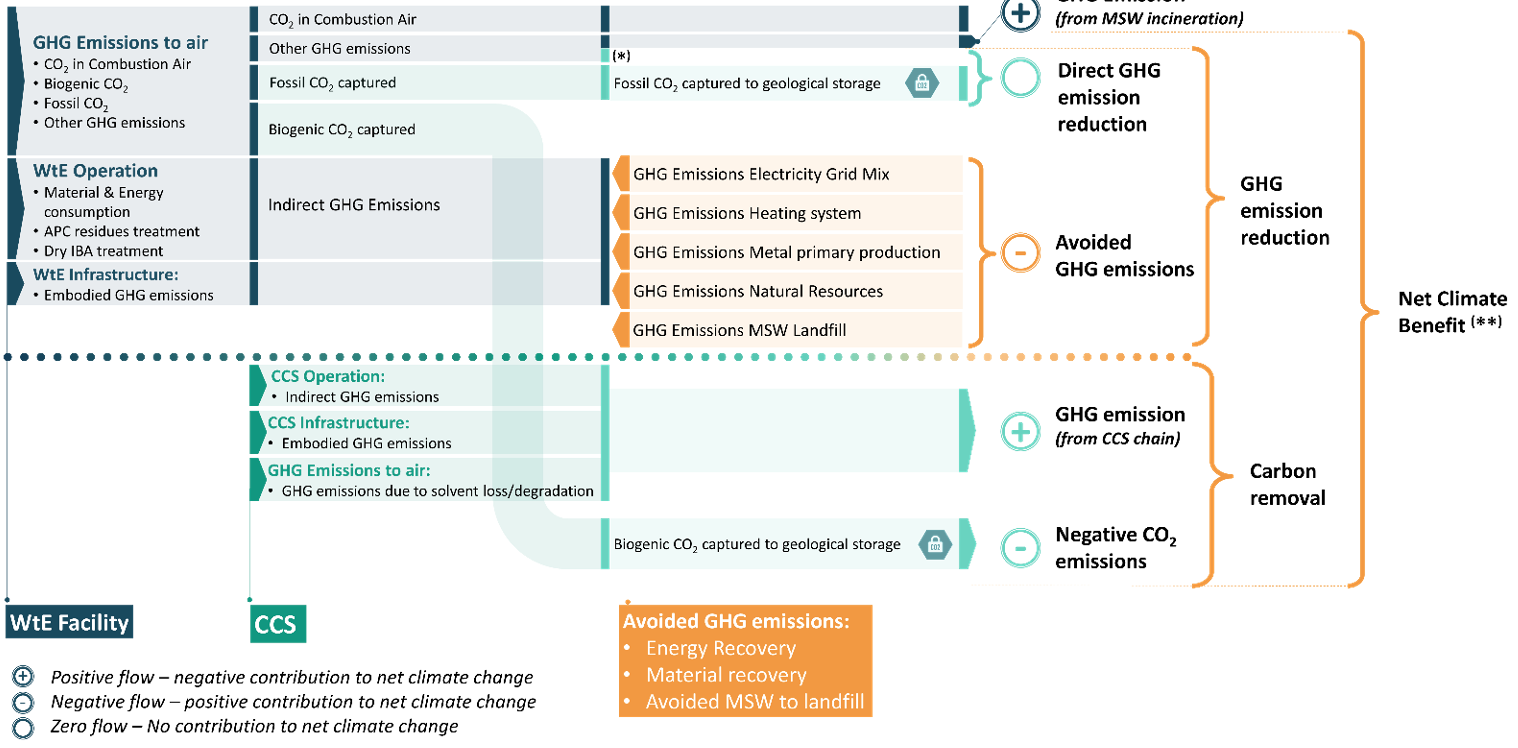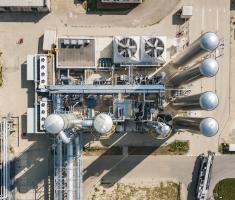Paving the path for negative emissions from Waste-to-Energy facilities

There are nearly 500 Waste-to-Energy (WtE) plants in Europe incinerating over 99 million tonnes of non-recyclable, residual waste per year and generating heat and electricity through energy recovery1. Integrating carbon capture and storage (CCS) technology with WtE creates the opportunity for WtE plants to generate negative emissions, that is, to draw down atmospheric CO2 by capturing and permanently storing biogenic (plant-derived) carbon after incineration.
As part of the NEWEST project, Dr Camilla Thomson and colleagues at The University of Edinburgh have been comparing CO2 capture technologies that could be used in the WtE sector, assessing their environmental impact and potential to generate negative emissions.
“According to our research, there is the potential for up to 30 MtCO2e/year of negative emissions from existing European WtE plants, but to achieve this we have to demonstrate the environmental benefits of carbon capture and storage (CCS) and overcome some of the challenges facing the deployment CCS technologies,” says Dr Thomson.
Researchers at The University of Edinburgh, Dr Laura Herraiz Palomino and Iain Struthers, have carried out a Life Cycle Assessment (LCA) of four WtE plant configurations, to determine the environmental impact of fitting them with CCS technologies. Overall, the net climate benefit of power-only or combined heat and power WtE facilities with CCS are much greater than without CCS, even when taking into account the environmental impact of building and running the CCS infrastructure.
Their analysis, which assumes that 100% of the CO2 arising from fuel combustion is captured, suggests that a net climate benefit of at least 482 kgCO2eq per tonne of municipal solid waste (MSW) can be achieved when considering both the negative emissions and life cycle impacts of the plant.
Although the results were relatively insensitive to the four waste composition scenarios considered, removing paper and card appeared to worsen a plant’s negative emissions potential, while removing kitchen, garden waste and plastic could improve it. “Further work is required to expand the life cycle system boundary and investigate the holistic effect of these scenarios on the waste treatment system,” says Iain Struthers.
Camilla Thomson is now focusing on how to report the net climate benefit across the multiple co-products of WtE-CCUS such as waste treatment, energy production and material recovery, so that this data can be used for national-level reporting, trading carbon credits and policy making.
“The value reported here doesn’t provide insight into the carbon impacts/benefits of the output energy; we need to develop a more comprehensive method for evaluating and reporting the climate impacts and benefits of WtE-CCUS across the multiple relevant industry sectors,” she says.
1 - https://www.cewep.eu/waste-to-energy-plants-in-europe-in-2019/









